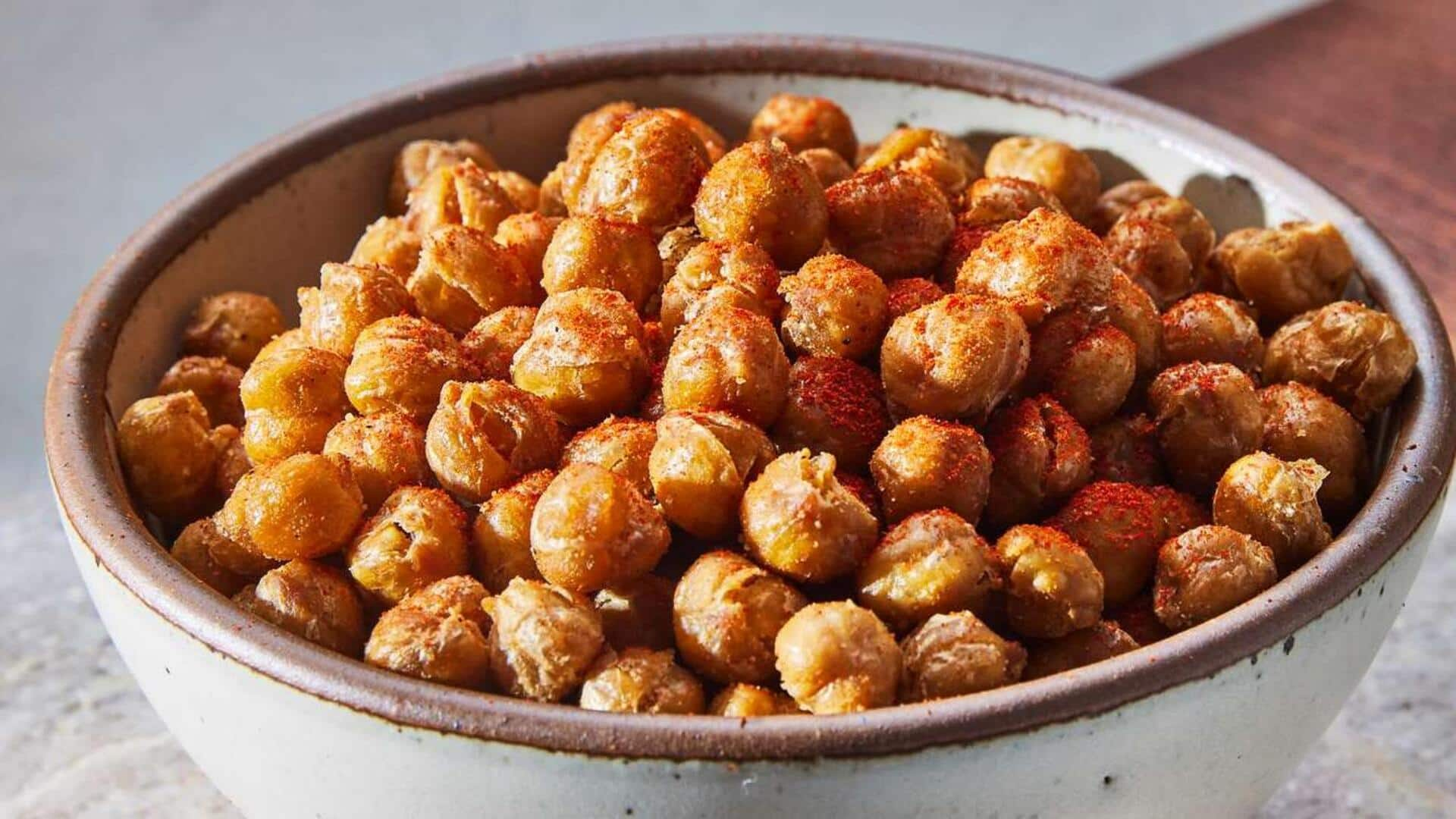
Roasted chickpeas: A healthy snack alternative
What's the story
Roasted chickpeas have become quite a popular snacking option for health freaks. These crunchy legumes are delicious and packed with nutrients, making them a perfect replacement for regular snacks. High on protein and fiber, roasted chickpeas can keep hunger at bay while providing essential vitamins and minerals. They are versatile, easy to make, and can be flavored in so many ways to suit different taste buds.
Health benefits
Nutritional benefits of chickpeas
Rich in protein and fiber, chickpeas are filling snacks. One serving can deliver up to 15% of daily intake of protein and 20% of fiber. They are also packed with vitamins (like B6 and folate) and minerals (like iron and magnesium). These nutrients keep you healthy by improving digestion, increasing energy levels, and keeping your heart healthy.
Simple cooking
Easy preparation methods
Preparing roasted chickpeas is a cinch. Begin by rinsing canned or cooked chickpeas well before patting them dry with a towel. Toss the chickpeas in olive oil and your choice of spices (paprika, cumin, etc.) for extra flavor. Spread them evenly on the baking sheet and roast at 200 degrees Celsius (around 400 degrees Fahrenheit) for some 30 minutes until they turn crispy.
Taste options
Flavor variations to try
Roasted chickpeas can be spiced up in many different ways to suit your taste. For a spicy kick, try adding chili powder or cayenne pepper before roasting. If you want something sweet, use cinnamon or nutmeg with a bit of honey after roasting. Different herbs like rosemary or thyme can also be experimented with to get unique flavors without the extra calories.
Keeping freshness
Storage tips for freshness
To ensure roasted chickpeas stay crispy, store them in an airtight container once they cool completely post-roasting. They should be stored at room temperature, out of direct sunlight or sources of moisture. This could make them lose their crunch over time. They should be properly stored within a two-week maximum shelf life period, usually seen under ideal conditions.